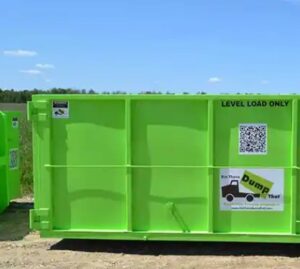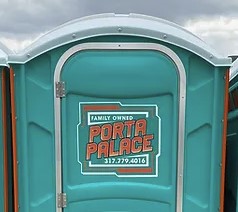Connect With Us:
It doesn’t matter what you do with a room. If you start with the right floor, you’re going to get the job done right. So what’s new? What new ideas are challenging the tried-and- true?
Luxury Vinyl
One of the hottest trends in flooring is Luxury Vinyl. Yes, it sounds like a contradiction, but according to Scott Humphrey, CEO of the World Floor Covering Association, vinyl can duplicate any surface—from wood to marble, thanks to extraordinary photo technology.
“You may have to look twice to see that it’s vinyl.” Humphrey says “It’s the fastest-growing portion of the industry in the past two years.”
Okay, so calling it “luxury” may be a bit of a stretch, but technology has given vinyl a new look. At its most basic, the process of producing it amounts to taking a photo of wood and printing it into the significantly less expensive vinyl flooring, but as Humphrey points out, anything you can take a picture of, you can make it into vinyl tile.
Humphrey says, “It can go anywhere — some of it looks like marble and people put it in elegant bathrooms.”
While luxury vinyl is a world apart from its origins, it still shares two things in common with its predecessors—it’s the perfect floor for bathrooms, kitchens or anyplace wet or in need of frequent mopping, and it’s still a great surface for walking.
Carpeting
Humphrey reports that carpet is getting more environmentally friendly.
“Everybody is making carpet that’s green,” he said. “They have factories that do this all across the United States. Shaw (Floors) is the only one that recycles nylon into carpeting, but a lot of companies melt down polyester and make new fiber over and over.”
Softer textures are the cutting-edge trend in the carpet business.
“The thing that has been most surprising to me is the return of luxury carpet,” he said. “Some of it is the softest carpet I’ve ever felt.”
He particularly cited Shaw’s Caress line (nylon, with a new way of processing the fiber) and Mohawk Flooring’s SmartStrand Silk line (a nylon product that the company says uses three times the number of fibers of other carpet). In terms of carpet styles, the current favorite is a broad genre called cut-and- loop, in which the pile is partly cut and partly looped to create a sculpted look or pattern, Humphrey says. Carpet pads are better than ever, too. Dense rubber holds up better and provides more bounce to the ounce than fabrics and rubbers of old.
Wood
With the advent of the “great room” concept that unites kitchen and family rooms into one expansive space, it’s become common to see hardwoods on kitchen floors and every other room in the home. Preferences in hardwoods are leaning toward darker stains, with a growing interest in gray tones. Trends are also toward larger planks or toward using multiple-sized planks and toward more exotic species — hickory, cherry, walnut. Oak, maple and heart pine continue in popularity. Look for more wood floors that have been hand-scraped and hand-textured.
Humphrey says, “People are willing to pay for a new floor, but they want it to look old.”
A growing segment of the market is interested in reclaimed woods, which have been salvaged from older residential flooring or even from old barns. “Or, a lot of companies are taking new hardwood and making it look old,” Humphrey said. “It’s like what happened with blue jeans — making them look worn.” New factory-finished hardwood flooring offers all the charm of reclaimed timber — right down to that timeless hand-hewn look — but without the high costs associated with true salvaged lumber. Factory-finished wood will stand up to moisture fluctuations better than any wood flooring that is finished onsite, as well.
Bamboo
Bamboo flooring made a big splash in the industry some years back because it comes from an easily renewable resource, but the category but it was not entirely successful because there were shrinkage issues.
“Bamboo is getting better,” Humphrey says. “I haven’t heard much about the shrinkage issue in a couple of years.”
Look for bamboo to be produced in an array of colors and plank widths. As with all wood flooring, it’s best to keep bamboo out of moisture-prone rooms like kitchens and baths.
Tile
Ceramic tile is getting bigger. Sizes larger than the traditional 12-by- 12 are growing in popularity, although there are a lot of regional preferences. In the Denver area, for example, sizes like the 12-by- 24 tile are catching on. Popular styles look like fabric, wood or even concrete.
“And those digital prints that you see on laminate countertops and vinyl tile — they’re also doing that on ceramic tile, so that you might also see tiles that look like hardwoods,” Humphrey says.
It’s important to remember that large-format tiles are heavy, and require a perfectly level substrate and a professional installer for the job to come out right. Tiles made of recycled glass and terrazzo are gaining favor. They’re sleek and easy to clean and add contemporary flair to an environment.
Cork
Known for its amazing acoustic-insulating qualities, cork flooring also is much more comfortable to walk on than traditional hardwood and most certainly tile and today’s options span the color palette. Thanks to new factory finishes, cork is far more durable than it was just a few decades prior, but it is susceptible to moisture damage and will fade when exposed to sunlight.
Concrete
Modern minimalist décor looks great on a poured sea of concrete. It looks extraordinarily clean and sleek, and can be colored or designed to suit any taste. Of course it washes well and wears like… well, concrete. But there are downsides prospective owners need to consider—it never gets warm, and there is no cushioning, so walking on it, or standing in place—like cooking a meal—can be mighty uncomfortable.
There’s a floor for every room and for every homeowner. Offer up some unexpected suggestions and check out the latest patterns and colors in hardwood, laminates, tiles, carpet and luxury vinyls.




